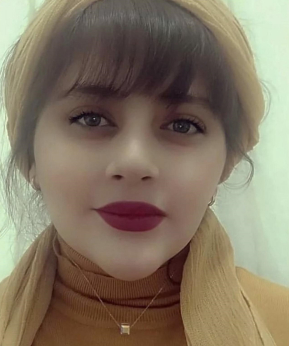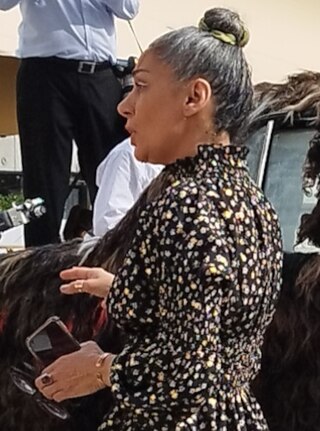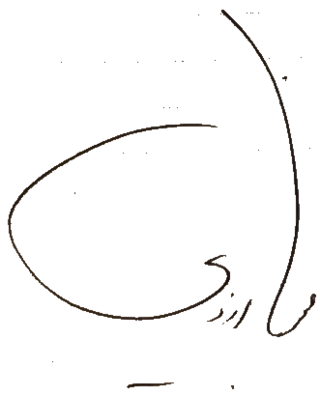
PaykanArtCar is a non-profit organization and art project, based in the US. It is focused on human rights issues in Iran.

PaykanArtCar is a non-profit organization and art project, based in the US. It is focused on human rights issues in Iran.
The non-profit organization, based in Florida, has purchased a car, now also called the PaykanArtCar, and intends to let different Iranian activist artists work on it as an art project, meant to highlight various political issues and repressed communities in Iran. The car is an Iranian Paykan, gifted in 1974 by Shah Mohammad Reza Pahlavi of Iran to Nicolae Ceaușescu, dictator of Romania. It was bought at an auction in 2021 for €95 000. [1] [2] [3]

The art car was first exhibited in October 2021 at the Oslo Freedom Forum in Miami, held by the Human Rights Foundation (HRF). [2] The first artist to paint the car was Alireza Shojaian, an exiled Iranian. Shojaian, working with an airbrush for the first time, took inspiration from the story of Rostam, a legendary Persian hero, the art of 20th century Iranian artist Hossein Qollar-Aqasi, and connected them to the 2021 murder of the gay Iranian Ali Fazeli Monfared, [4] [5] as well as the executed Iranian wrestler Navid Afkari. [2] Shojaian said
The aim of this edition of the PaykanArtCar is to shed light on the deadly abuse of LGBTQIA+ people in Iran, a problem that has been repeatedly denied by the regime and neglected by Iranian society, including in the diaspora. [6]
The organization received the Václav Havel Prize for Creative Dissent from the HRF, who said that the car was "a daring piece of art that advocates for human rights and dignity in Iran." [7] [8]
The car has been exhibited in Canada and Brussels, Belgium. [9] [10] [11] It was meant to be shown at AsiaNow, an art fair in Paris, [12] but the invitation was revoked. [4] [13] A representative of AsiaNow stated that
The problem is neither the artist nor the project, but the organization supporting this project, which uses the L.G.B.T.Q.+ cause for priority reasons that are other than purely artistic, and which endanger the safety of the people working with us on our Iranian platform." [2]

The second installment of the PaykanArtCar was first shown in Oslo, Norway, outside the Oslo Concert Hall, in June 2023. This installment was created by Simin Keramati, Iranian-Canadian artist. [14] [15] She covered the car with women's hair, with the intent that the art project shall raise awareness of the struggle of Iranian women, as well as pay tribute to the death of Mahsa Amini and the following Mahsa Amini protests. [16] [17] Keramati said
The Paykan car itself, the canvas for this installation, is a typically masculine element in Iranian society. Covering this classic national car with natural women’s hair, I appropriate this figure as a female body. [18]
Women's rights activist Masih Alinejad, present at the unveiling, said
We are here to say that all this hair symbolizes the brutality of this gender apartheid regime. ... I ask Norwegian women to touch and feel this hair. Think you could be killed for this. Just a little hair can get you killed in 21st century Iran. [16]
PaykanArtCar was founded by Mark Wallace, American ambassador to the United Nations 2006–2009, and Hiva Feizi, the organization's executive director. [1] [2] [19]

The Paykan, is the first Iranian-made car produced by Iran Khodro between 1967 and 2005. The car, formerly called "Iran National", is a licensed version of the British Rootes Arrow and was very popular in Iran from its introduction until its discontinuation.
Iranian hip hop, also known as Persian hip hop, refers to hip hop music in the Persian language developed in Iran and the Iranian diaspora. It originated from American hip hop culture, but has developed into a distinct rap style that draws on Iranian cultural concepts and engages with the modern issues Iranians are facing today.

The Human Rights Foundation (HRF) is a non-profit organization that focuses on promoting and protecting human rights globally, with an emphasis on closed societies. HRF organizes the Oslo Freedom Forum. The Human Rights Foundation was founded in 2005 by Thor Halvorssen Mendoza, a Venezuelan film producer and human rights advocate. The current chairman is Russian chess grandmaster Garry Kasparov, and Javier El-Hage is the current chief legal officer. The foundation's head office is in the Empire State Building in New York City.
Bahareh Hedayat is an Iranian activist and campaigner for women's rights. She was one of the activists who worked on the One Million Signatures campaign to change laws that discriminate against women in Iran. She has been arrested and imprisoned several times.
Saleh Nikbakht is an Iranian lawyer and academic. He is the spokesman for the Society of Political Prisoners in Iran.

Iran Human Rights (IHR) is a non-profit international non-governmental organization focused on human rights in Iran. Founded in 2005, it is a non-partisan and politically independent organisation based in Oslo, Norway. The human rights defender and neuroscientist Mahmood Amiry-Moghaddam is the co-founder and international spokesperson of the organisation.

Afshin Naghouni is an Iranian-born British visual artist. He is known for his controversial, larger-than-life paintings. From a critique about Naghouni’s paintings around the turn of the century: he works in an expressive and cubist style that explores every aspect of each object in his compositions, simultaneously.

The Guidance Patrol or morality police is an Islamic religious police force and vice squad in the Law Enforcement Command of the Islamic Republic of Iran. The Guidance Patrol enforce Sharia–Islamic law—per laws in Iran; this is most often the enforcement of Islamic dress code, such as ensuring women in the country wear hijabs. The Guidance Patrol was formed in 2005 as a successor organisation to the older Islamic Revolution Committees, and reports to the Supreme Leader.

Alireza Shojaian is an Iranian-born French painter and visual activist.

Ali "Alireza" Fazeli Monfared was a 20-year-old Iranian man who was kidnapped and decapitated by three men, namely his half-brother and two cousins, near the city of Ahvaz in Iran's Khuzestan Province because of his sexual orientation. News of the situation garnered significant social media attention and coverage and calls by activists and celebrities to challenge homophobia in Iran.

On 16 September 2022, the 22-year-old Iranian woman Mahsa Amini, also known as Jina Amini, died in a hospital in Tehran, Iran, under suspicious circumstances. The Guidance Patrol, the religious morality police of Iran's government, arrested Amini for allegedly not wearing the hijab in accordance with government standards. The Law Enforcement Command of the Islamic Republic of Iran stated that she had a heart attack at a police station, collapsed, and fell into a coma before being transferred to a hospital. However, eyewitnesses, including women who were detained with Amini, reported that she was severely beaten and that she died as a result of police brutality, which was denied by the Iranian authorities. The assertions of police brutality, in addition to leaked medical scans, led some observers to believe Amini had a cerebral hemorrhage or stroke due to head injuries received after her arrest.

Civil unrest and protests against the government of the Islamic Republic of Iran associated with the death in police custody of Mahsa Amini began on 16 September 2022, carried on into 2023, but were said to have "dwindled" or "died down" by spring of 2023. As of September 2023 the "ruling elite" of Iran is said to remain "deeply entrenched" in power. The protests have been called "unlike any the country had seen before", the "biggest challenge" to the government, and "most widespread revolt", since the Islamic Revolution in 1979.

"Baraye" is a power ballad by Iranian singer-songwriter Shervin Hajipour inspired by the death of Mahsa Amini and its aftermath. Widely referred to as "the anthem" of the protests, "Baraye" received huge critical acclaim for its vocals and portrayal of the emotions of the Iranian people all around the world. At the 65th Annual Grammy Awards the song won the first-ever special merit award for Best Song for Social Change.

Simin Keramati is an Iranian-born Canadian multidisciplinary visual artist and activist. She is primarily known as a painter, video artist, installation artist, and filmmaker. Keramati lives in Toronto.

Mona Borzouee is an Iranian poet and songwriter. Borzouee is known for writing Persian song lyrics for several well-known Iranian musicians. She was arrested in October 2022 during the Iranian protests following the death of Mahsa Amini.

Toomaj Salehi is an Iranian hip hop artist mainly known for his protest songs concerning Iran's societal issues and the policies of the government of the Islamic Republic of Iran.

The ongoing Mahsa Amini protests broke out following the death of Mahsa Amini while she was under arrest by the Guidance Patrol of the government of the Islamic Republic of Iran. Reactions to her death and the following crackdown on protestors by law enforcement are both domestic and international.

Khodanur Lojei or Lajai was an Iranian protester from Zahedan, who was killed during the 2022 Zahedan massacre, one of the Mahsa Amini protests. A picture of him with his hands tied to a flagpole with a bottle of water put in front of him has become one of the symbols of the ongoing protests Iran.

Gisuborān meaning haircutting (Persian:گیسوبران) is one of the mourning rituals in Iranian culture. This ritual gives a sad and emotional state to mourning. In 2022 women in Iran and later internationally used haircutting as a protest against the treatment of women in Iran. The BBC included an unknown woman cutting her hair as one of their 100 Women in 2022.
The Mahsa Amini Human rights and Security Accountability Act is a bill that was first introduced to the 117th Congress in the wake of the Woman Life Freedom protests in Iran. Its intention is to put sanctions on the leaders of the Islamic Republic of Iran. The bill was reintroduced as H.R. 589 to the House of Representatives and as S.2626 to the US Senate in the 118th congress.